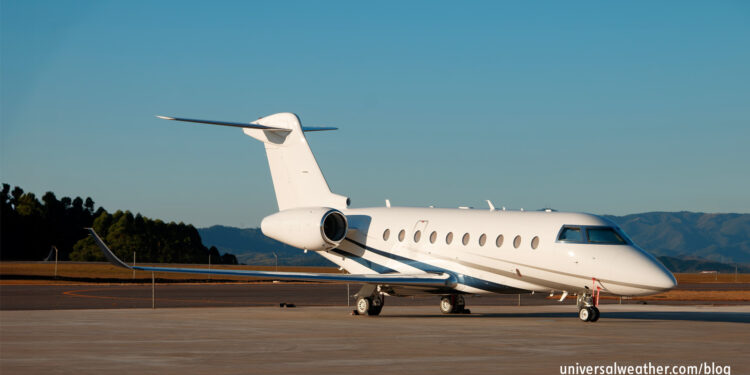Business Aviation Trip Planning Tips: Cabotage in Brazil

This is a post by author Marcia Taue. Marcia is the operations manager at Universal Aviation Brazil, which has aircraft ground handling facilities in Sao Paulo, Brasilia, Manaus, Recife, and Rio de Janeiro. Marcia is an expert on business aircraft operations in Brazil and can be contacted at marciataue@universalaviation.aero.
Cabotage is generally not an issue in Brazil for General Aviation (GA); however, Brazilian cabotage regulations are not clear and may be subject to interpretation by local customs officials. There are steps you can take to ensure that cabotage issues do not cause problems for you, and your 3rd-party provider can be a great resource for that.
The following is an overview of what you need to know:
1. Defining cabotage
The purpose of cabotage rules is to prohibit foreign aircraft from traveling into another country, picking up foreign nationals/citizens, and providing transportation to/between points within that foreign country. According to the International Civil Aviation Organization and the Chicago Convention, “Each state shall have the right to refuse permission to the aircraft of other contracting states to take on its territory passengers, mail, and cargo destined for another point within its territory.”
2. Cabotage in Brazil
In Brazil, cabotage is an issue for scheduled airlines and not, generally, for private non-revenue and charter (non-scheduled commercial) GA. While regulations state that foreign-based for-hire operators, including scheduled commercial and “non-regular” flights, may not transport cargo or passengers internally within Brazil, this does not usually apply to GA operations. That said, cabotage rules in Brazil are not always clear or precise. You may find, in rare cases, that your charter flight may be considered to be a “non-regular” operation and subject to cabotage consideration.
3. Potential GA issues
Cabotage issues only impact aircraft that are traveling domestically within Brazil. Therefore, you may drop passengers in Brazil and return home as a deadhead flight or vice versa as long as there are no internal stops in country. Cabotage issues have more to do with flying charter passengers internally within Brazil. If you’re not doing ferry flights within Brazil and have the original passengers onboard for all domestic legs, there should not be any cabotage considerations. While dropping off/picking up passengers within Brazil is permissible, there have been times where issues have arisen. The problem here is that, upon arrival in Brazil, some customs agents may interpret cabotage rules as applying to GA while others may not. At this time we’ve only seen cabotage interpretation issues at Guarulhos (SBGR) and Galeao Intl (SBGL), but it’s best to be prepared anywhere you land. If cabotage is suspected, worst-case scenario is that your domestic permit for Brazil could be denied, or a passenger in question would not be able to proceed. There are no financial penalties associated with suspected cabotage infringements. Please see this link from Brazilian Aeronautical Code, article 216, which details the actual regulation concerning cabotage (in Portuguese).
4. Tips for charter operators
As cabotage regulations are not precise in Brazil, it’s recommended that operators bring a copy of the signed charter contract to prove payment for the flight was made outside Brazil, and that all domestic travel is for the benefit of non-Brazilians. In addition, charter operators should carry a letter listing passengers who will be onboard for each leg. Ideally, it’s best to keep the same passengers onboard for all legs within Brazil, although this is not a requirement.
5. Cabotage for private non-revenue operations
Brazilian cabotage policies do not impact private non-revenue flights so long as all passengers are affiliated with the company or when the aircraft owner is onboard. For private non-revenue flights, you should always be able to prove that passengers have an affiliation with your company and are not paying for the flight. For this reason, it’s recommended that you carry a letter, on company letterhead, stating affiliations of every passenger with the company or aircraft owner, signed by the director of operations or member of the board. This is known as a “customs letter,” and it should be submitted with private operator domestic permit requests for Brazil.
6. SBGR and SBGL are particularly stringent on cabotage interpretation
It’s much more likely at SBGR and SBGL than at any other airport in Brazil for customs officers to review crew documentation and to consider potential cabotage infringements. Thus far, we’ve not heard of any issues at other Brazilian airports.
Conclusion
When you operate to Brazil, it’s always best to be prepared in terms of potential cabotage considerations. Be aware that regulations are not clear and may be subject to local interpretation. Best practice, for private non-revenue operators, is to carry a “customs letter.” Charter operators should avoid ferry flights within Brazil and always carry a charter agreement proving that payment for the charter was made outside Brazil.
Questions?
If you have any questions about this article or would like assistance planning your next trip to Brazil, contact me at marciataue@universalaviation.aero.




